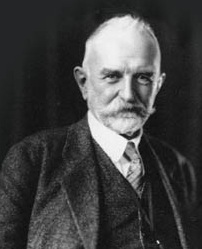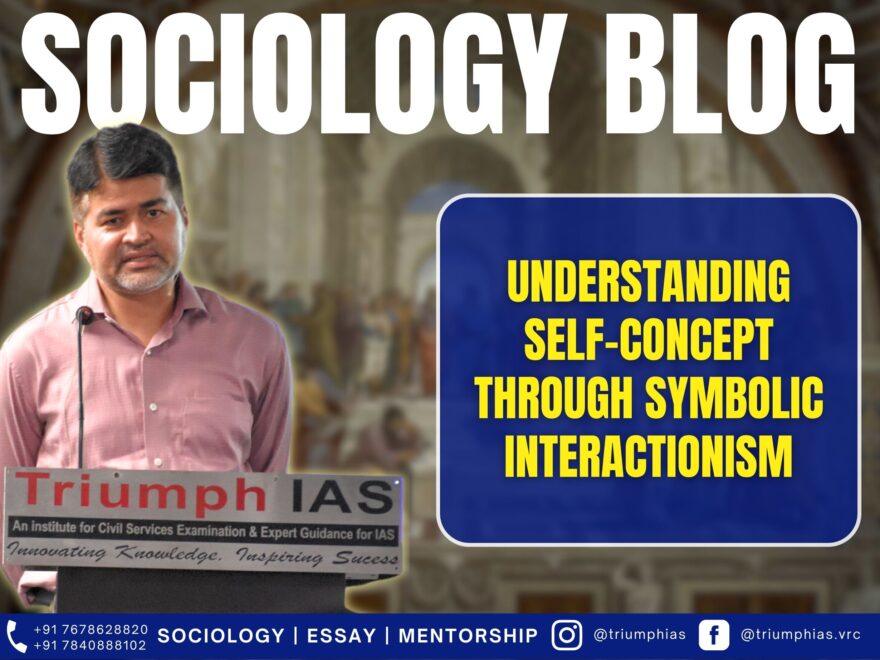
“Nobody is always stupid, but
everyone is stupid
sometimes”
Self-Identity: Concept Formation
Relevant for Sociology Paper-1 (Unit-4 )
- In symbolic interactionism, the self is a fundamental concept alongside symbols, meaning, and interaction. The self is characterized by its reflexive nature, allowing individuals to treat themselves as objects, engage in self-reflection, self-debate, self-evaluation, and similar activities. This unique attribute, which is also observed in dolphins and great apes to some extent, is based on the social nature of human language and the ability to take on different roles. It enables individuals to adopt an external perspective and develop a conceptualization of themselves, commonly known as a self-concept.
- Two types of individuals play crucial roles in the self’s development. The first type is the significant other, who holds importance in an individual’s life and whose opinions carry weight. The second type is the generalized other, which represents the collective understanding of a community, group, or any organized system of roles (for example, a baseball team). These others serve as reference points from which individuals view themselves.
- Cooley’s influential concept, the looking-glass self, captures the significance of others in shaping self-concepts. According to Cooley, individuals perceive themselves, to some extent, based on how they believe others perceive them. Self-conceptions and self-feelings, such as pride or shame, are influenced by individuals’ perceptions of how they are perceived and evaluated by others. In contemporary symbolic interactionism, this process is referred to as reflected appraisals and is emphasized as the primary process in self-development.
- The self is also recognized as a product of social influences in various ways. The content of self-concepts mirrors the content and structure of society. This is particularly evident in the internalization of role identities, such as being a father or a student. Roles represent the behavioral expectations associated with a particular social status and play a significant role in bridging the gap between social and personal organization. According to Sheldon Stryker (1980), the degree of commitment to different role identities greatly contributes to the organization and structure of self-concepts. When individuals are strongly committed to a specific role identity, they are motivated to align their actions with their understanding of that identity in order to preserve and safeguard it, as it directly affects their self-esteem. Much of the process of socialization, especially during childhood, involves acquiring social roles and learning associated values, attitudes, and beliefs. Initially, this occurs within the family context and later extends to broader arenas such as peer groups, school, and work settings that make up an individual’s social world. Role identities that are established early in life, such as gender and familial roles, tend to remain significant throughout one’s lifespan. However, socialization continues throughout life, and individuals adopt various role identities as they progress through different stages.
- Socialization is not a passive process of merely acquiring and conforming to predefined roles and expectations set by others. The self is an active and discerning entity that wields substantial influence over its environment and itself. When individuals assume roles, they actively shape, interpret, and express those roles, much like they learn them. In this process of role-making, individuals construct their roles in a unique manner. When they perceive a mismatch between a role imposed upon them and an esteemed aspect of their self-conception, they may distance themselves from that role, effectively dissociating their sense of self from it. A prevalent theme in this literature is the active involvement of the self in its own development, a process that can be unpredictable.
- Mead discusses three forms of interpersonal activity: language, play, and the game. These forms of symbolic interaction, which involve shared symbols like words, definitions, roles, gestures, and rituals, are central to his theory of socialization. They are the fundamental social processes that enable the self to reflect on and objectify itself. Language serves as a means of communication through significant symbols, allowing individuals to adopt the attitudes of others towards themselves. It not only plays a crucial role in mental processes but also serves as the primary social foundation of the self. Within the act of using language, individuals assume the role of the other, responding to their own gestures based on the symbolized attitudes of others. This process of “taking the role” in symbolic interaction is the fundamental form of self-objectification and is vital for self-realization. Mead’s concept of the self as an object represents the fundamental structure of human experience that emerges in response to other individuals within a social-symbolic world of internal relationships.
- This becomes even more evident in Mead’s interpretation of the play stage and the game stage. In play and games, similar to linguistic activity, the key to developing self-consciousness lies in the process of role-playing. During play, a child assumes the role of another person and behaves as if they were that person. This form of role-playing typically involves taking on a single role at a time.
- In contrast, the game involves a more complex form of role-playing compared to play. In games, individuals are required to internalize not only the character of a specific individual but also the roles of all other participants in the game. They must understand the rules of the game that determine the various roles. The arrangement of roles according to these rules brings together the attitudes of all participants, forming a symbolized unity known as the generalized other.
- The generalized other represents an organized and collective attitude that serves as a reference for individuals to define their own behavior. When individuals can perceive themselves from the perspective of the generalized other, they attain a comprehensive sense of self-consciousness. The game stage represents the social process at which individuals achieve selfhood. One of Mead’s significant contributions to the development of critical social theory is his analysis of games. He argues that game playing holds significant social and psychological importance and functions as an instrument of social control.
To master these intricacies and fare well in the Sociology Optional Syllabus, aspiring sociologists might benefit from guidance by the Best Sociology Optional Teacher and participation in the Best Sociology Optional Coaching. These avenues provide comprehensive assistance, ensuring a solid understanding of sociology’s diverse methodologies and techniques
Symbolic Interactionism, Self-Concept, Self-Reflection, Social Influence, Role Identity, Socialization, Cooley, Looking-Glass Self, Language, Play, Games, Mead, Generalized Other, Significant Other.
Follow us :
🔎 https://www.instagram.com/triumphias
🔎https://www.youtube.com/c/TriumphIAS
https://t.me/VikashRanjanSociology
Find More Blogs
|
Scope of the subject and comparison with other social sciences |
|||
|
|
|
|
Modernity and social changes in Europe |


One comment